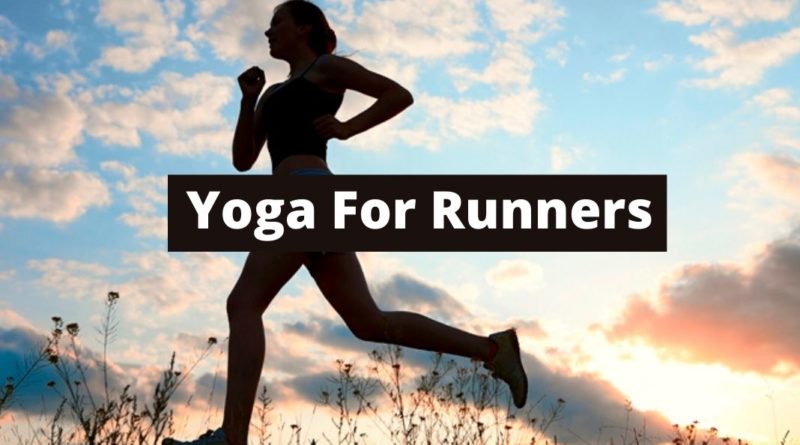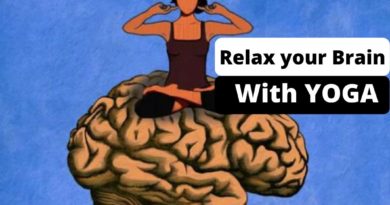Yoga Poses to Improve Your Running
Over time, most runners come to two almost universal truths: only running will not improve and running is a sport that easily leads to many and varied injuries. The obsession with exceeding our limits as soon as possible means that many times we launch ourselves to run distances or to rhythms to which our body is not prepared, partly pushed by an environment that does not stop repeating that surrendering is not an option to what is usually unite our own unconsciousness. And yes, we reach our goals, but long before our muscles, tendons, and ligaments are sufficiently prepared. We reached the goal but we are not better runners than before.
Once we admit that only running we will not improve as runners, many look in the gym to gain strength, others also use cycling, ellipticals or aqua running to maintain the aerobic background reducing the impacts on the joints. Others like me, in addition to trying not to drown (swim) and not fall off the bike, we started practicing yoga a few years ago with the intention of taming many of the abnormalities that my body brought as standard and that running accentuated. After some years I have been confirming with facts that yoga can help me to run more and better (or at least to continue running the same and not worse)
Table of Contents
How can yoga help us to run more and better?
If we ask the (good) coach or runners who have been giving the shoe for a long time about the holy grail of running, most of them would agree that there are some simple, but not infallible, guidelines to improve as a runner and avoid as far as possible. injuries as possible: stretching after running, not neglecting arm strength, doing sit-ups, improving running technique, getting enough rest, etc. The interesting part is that many of these tips can easily follow practicing yoga:
- Improve your running technique and strengthen your feet. In yoga, the support of our feet is the basis for correctly performing most of the poses or asanas. Strengthening the foot and becoming aware of it will allow us to improve our running technique.
- Perform stretches after training sessions. Try to stay flexible without losing the re-activity of your muscles. As we will detail in the next point, with yoga we can significantly improve our flexibility and do it gradually and balanced.
- Learn to control your breathing. Breathing is one of the fundamentals of yoga, we will learn to control and relax it when it is altered.
- Strengthen your upper body, especially lower back and abs. Depending on the type of yoga we will find a more or less physical yoga in a way that adapts more to our needs: strengthen, relax, stretch, etc.
- Do not neglect the work of the arms and shoulders since part of the movement necessary to run is generated from them. Postures like Adho Mukha Svanasana or Chaturanga Dandasana will help us gain strength in our arms and shoulders.
- Strengthen your lower body (quads, abductors, twins, etc.) to avoid joint problems. Postures such as the series of the warrior (virabhadrasana), the posture of the chair (Utkatasana) or others where balance is involved, such as Vrikshasana (Tree), will help us strengthen the muscles that support the joints that are usually more affected when running (knees, hip, and ankle).
- Get enough rest. The practice of yoga, unlike other sports activities, although it requires effort implies a very high degree of concentration, which allows us to isolate our mind from other thoughts and focus only on our body, breathing and how both react to each posture, achieved after practice a high degree of relaxation.
- Don’t just run, play other sports. Practicing yoga or another activity will benefit us as runners if only to free the mind and that our body does not always do the same repetitive movements.
Examples of yoga poses for runners
The first that comes to mind when we think of yoga is that many postures will help us stretch the muscles, and in part it is so, in many of them our muscles undergo different stretching and twisting in each posture, but slowly and, above all, looking for the postural balance that many of us lost long ago.
As an example of stretching practicing yoga we can see the following posture, a variation of the Dove (Eka Pada Rajakapotasana), where one of the muscles that is most neglected by runners is worked: the glutes.
With the following posture, Adho Mukha Svanasana (Downward facing dog pose) can be seen as in the same posture we can involve strength (wrists, arms, shoulders), stretching of the lower extremities (twins, Achilles, hamstrings, plantar arch) to the time we stretch our back. In the sequence that we have developed to introduce yoga in corridors we have included it on several occasions, since, although it may not seem so and at first it costs us, it must be one of the yoga postures that we practice the most by covering various points that benefit us as runners and in time we will come to find the comfort of it.
Another of the main advantages of practicing yoga for which we are runners is presented when performing the sessions barefoot. Reconnecting our feet to the ground, without the intermediation of the shoe will undoubtedly favor our running technique. The musculature of the foot will be reinforced when working the different plantar supports depending on the posture we are performing and together with the postures that require paying attention to our balance, we will recover sensations that we had forgotten after the continued use of conventional shoes and shoes.
The sequence of basic yoga poses for runners.
In this first post, we have created a sequence that tries to summarize in a few positions several of the advantages that yoga can bring to runners. The sequence begins and ends standing, and in it we include strengthening positions for both the lower and upper body, mobilizing and stretching our back, and we have also added various postures to stretch twins and hamstrings.
- In the first part, the transition is made from the standing posture to the Adho Mukha Svanasana posture (Downward facing dog pose).
- The central part can be repeated one to three times, always paying attention to our breathing and making each transition between postures accompanying it. In the second posture, we only have to raise the heels and from there we will take the body to the plank pose or (Phalakasana), which we can hold several breaths if we want to exercise the abdominal area.
- In the final part we return to the standing posture from Adho Mukha Svanasana, bringing the feet towards the hands and, once here, inhaling and with our legs still flexed, we will raise the trunk and hands to the chair pose (Utkatasana ) that will help us strengthen quadriceps.
The sequence is not demanding, we can do it before a workout to warm up the muscles, in this case, the stretches must be done gradually and the Adho Mukha Svanasana posture we will start to do with the legs partially flexed so as not to stretch the muscles in the cold. If we perform this sequence after a race we can influence the postures where we stretch for several breaths.




